Lawn pest damage often goes unnoticed until it becomes severe. If your grass is turning brown and increasingly unattractive, you may be worrying about whether insects that eat grass have made your lawn into an around-the-clock buffet.
The truth is, there are many lawn insects in Pennsylvania that can be destructive to your lawn. Some of the varieties that eat grass can cause your lawn to wilt, turn brown, and ultimately die. That’s why it’s important that you take these concerns seriously.
Besides grubs, which feed under the lawn’s surface, two of the other most common lawn insects that eat grass are chinch bugs and sod webworms, which feed at the surface. Learning more about these lawn pests will help you make wise choices that will prevent them from destroying your lawn.
1. Chinch Bugs
These lawn pests have a blackish gray body with fine hairs, and sport white wings—though considering the fact that the adult is only about ⅙-inch long, they may be too small for you to notice those details. What you will notice is the damage that these surface feeding insects can do to your lawn. An infestation may bring as many as 200 insects per square foot of turfgrass.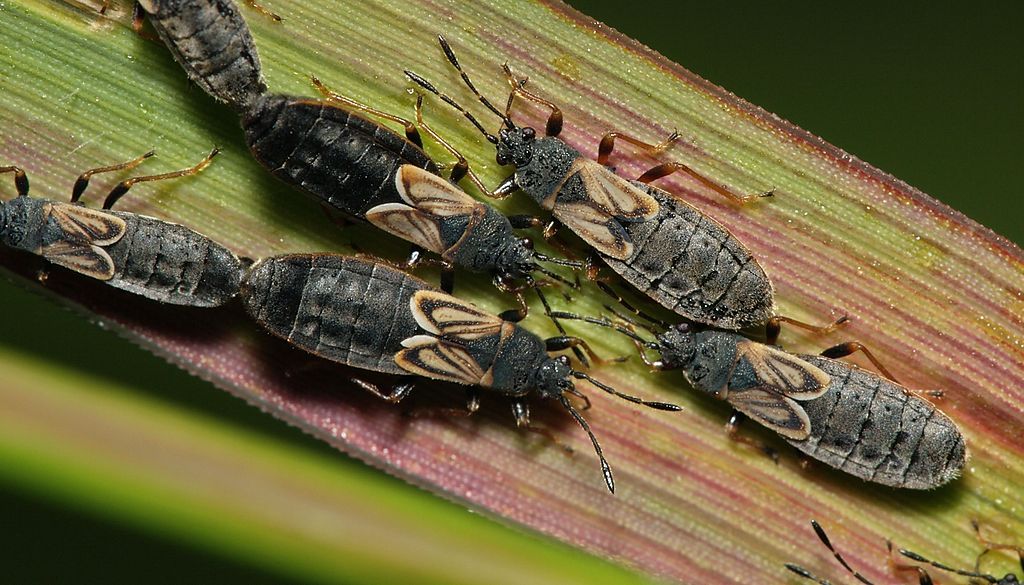 Chinch bugs are a common pest of the Lehigh Valley and definitely prefer certain grass types including the following:
Chinch bugs are a common pest of the Lehigh Valley and definitely prefer certain grass types including the following:
- Red Fescue
- Perennial Ryegrass
- Kentucky Bluegrass
Chinch Bug Life Cycle
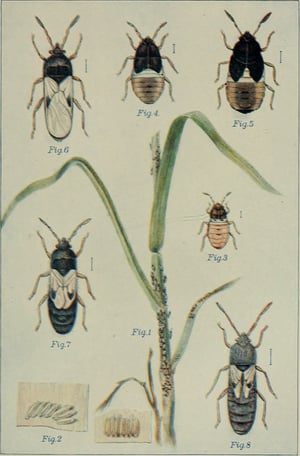
Mature chinch bugs overwinter in leaf litter and dense thatch areas where they can find shelter. They will remain there until temperatures rise to about 50 degrees, at which point they will disperse, mate, and begin to lay eggs. A female chinch bug can produce approximately 300 eggs in a period of 40 to 50 days. They will hatch within one to two weeks and the nymphs will mature to adults in approximately four to six weeks.
Chinch bug damage typically appears in the prime of summer, when the insects are actively feeding. However, if your grass is getting a lot of rain, this damage can be difficult to notice because it won’t show up as quickly.
Both nymphs and the adult form of chinch bugs feed on lawns and can cause serious damage by sucking out your the plant fluids and injecting a toxin that can cause grass to yellow, turn brown, and ultimately die.
Finding These Lawn Pests
Because these lawn pests truly are sneaky and prefer to remain sheltered, they tend to be most common in lawns that have a thick layer of thatch. They often go unnoticed due to their small size as well as their coloring, which tends to camouflage them in the lawn.
Oftentimes, signs of damage is what alerts people to a chinch bug problem. If you have turfgrass that is turning brown and suspect you have an infestation of insects that eat grass, then perform a visual inspection, looking for chinch bugs.This should be done on the fringe where the grass is still green because chinch bugs will move out after they’ve consumed an area. You’ll want to get on your hands and knees, pull the thatch apart at dozens of spots, and watch closely for 20 to 30 seconds without moving from that spot.
Another way to scout chinch bugs is with a metal tube. It could be an old can with the top and bottom removed. The tube (or can) should then be inserted into the ground, one to two inches deep. Fill with water to sufficient quantity that the chinch bugs will float to the top within about 10 minutes. After 10 minutes has passed, count the number of pests in order to establish the population density of your chinch bug infestation.
Chinch bugs prefer sunny areas and on a sunny day can even be spotted crawling across driveways, sidewalks, or other hardscaped areas.
Lawn Insect Control for Chinch Bugs
Removing excess thatch and performing lawn aeration to break up compacted soil is one way to remove the favorable environment where chinch bugs like to live. This should definitely help reduce your chinch bug population. However, if you already have an infestation of chinch bugs, then your lawn may require professional product in order to get these pesky insects under control.
2. Sod Webworms
There are several species of sod webworms, also known as “lawn moths,” that infest lawns in the Pennsylvania. Adult sod webworms are dull-colored moths and can reach a ¾ inch in size. The adult is characterized by a pair of projections on the head, resembling a snout. 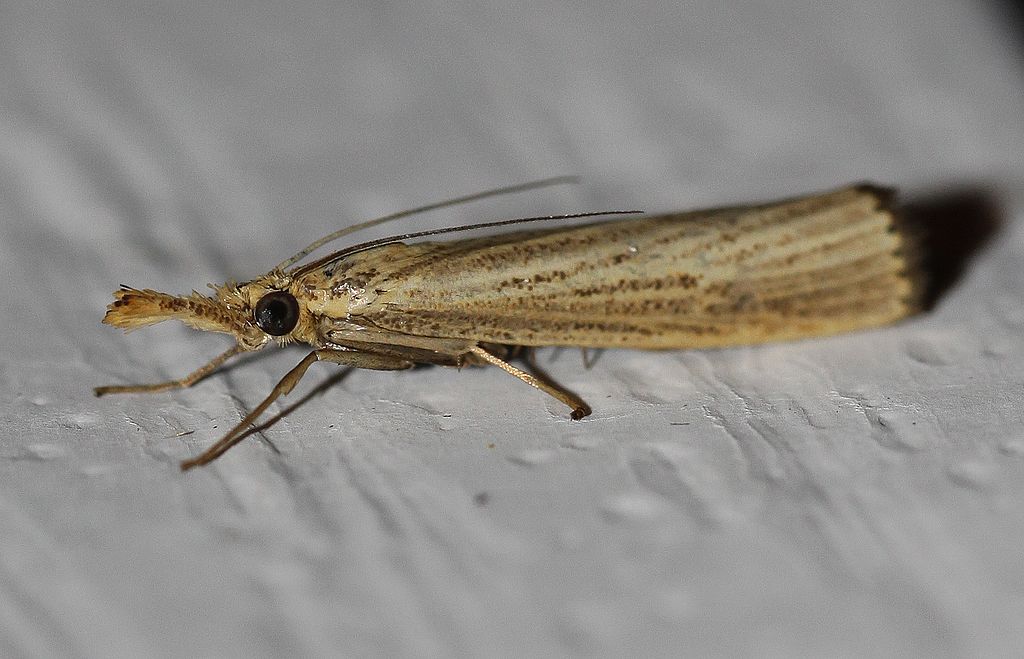 These lawn pests will feed on many species of grass including some of the following.
These lawn pests will feed on many species of grass including some of the following.
- Kentucky Bluegrass
- Perennial Ryegrass
- Tall Fescue
Sod Webworm Life Cycle
A female sod webworm can lay up to 200 eggs, which will hatch into young larvae within 7 to 10 days. Larvae are also a risk and will feed from July through early August and then pupate. The second generation of adult moths is active from late July through August. Eggs are once again laid and hatch into young larvae that will feed through late September prior to overwintering. Multiple generations of these lawn pests can occur annually.
Finding These Lawn Pests
During the daytime, sod webworms hide in sheltered areas and most feeding occurs overnight. Damage is typically recognized as brown patches as large as a baseball around the lawn. The worst damage typically occurs in July and August. Larvae chew off leaves and stems just above the crown. As it grows and continues to feed, the injured areas turn into more noticeable brown patches.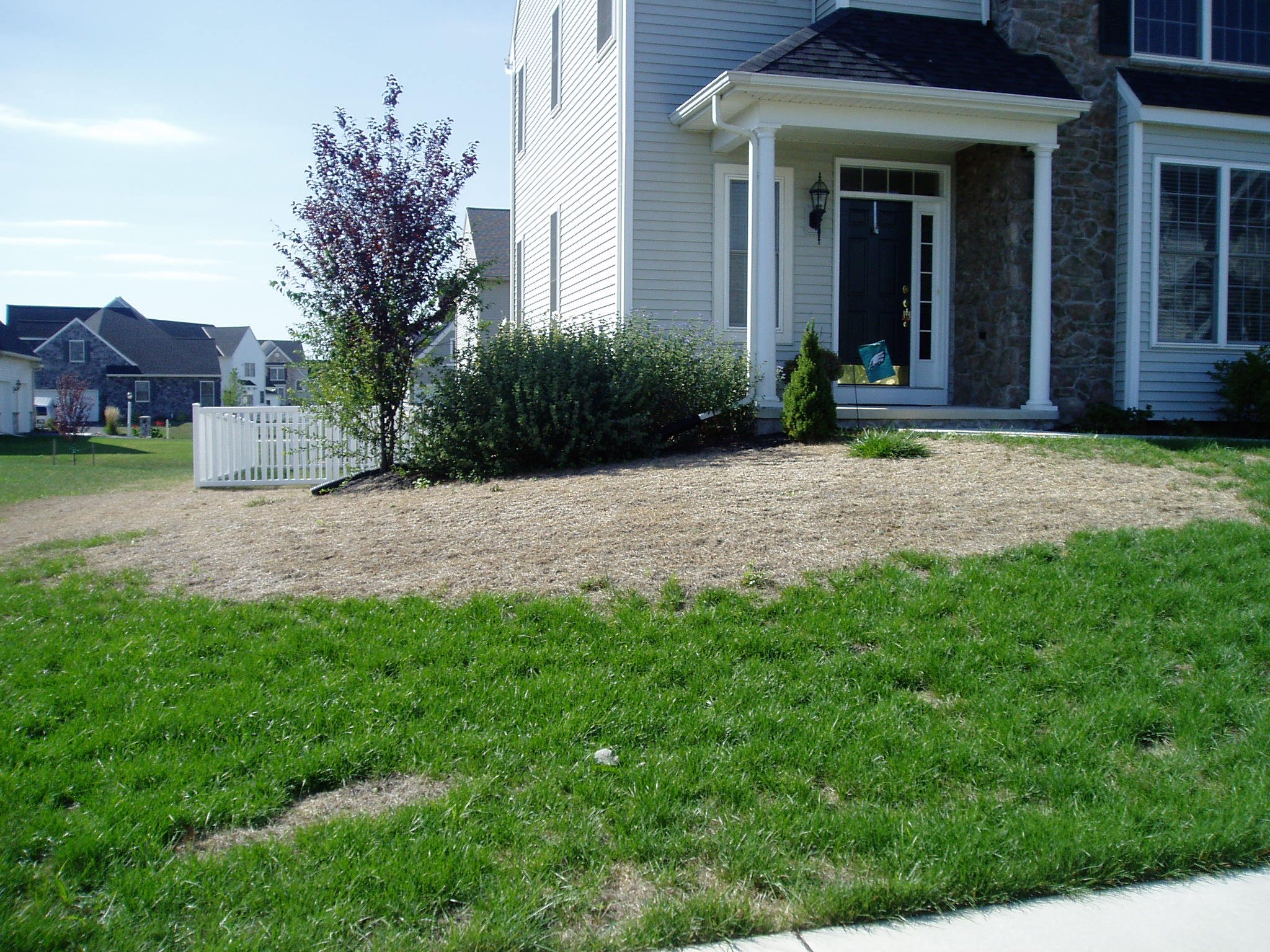
Lawn Insect Control for Sod Webworms
If you have an infestation of sod webworms then you may require a control product that will suppress larval populations while they are actively feeding. Going forward, using preventative treatment each year at the time they are likely to feed, will help keep these lawn pests at bay. At the very least, you should have your lawn thoroughly inspected by a technician if you have a history of a problem with these pests. They can let you know if they recommend anything additional for this pest for the season.
Is it a Lawn Pest or Something Else?
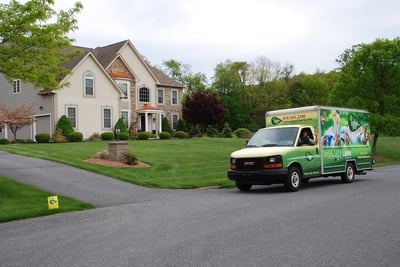
While sod webworms and chinch bugs are two of the more common lawn pests in the Lehigh Valley, the truth is there are many more. And sometimes the damage that you suspect is from an insect is actually from something else. For instance, both chinch bug and sod webworm damage can also resemble symptoms from a lawn that is experiencing drought.
This is why it’s so valuable to have a lawn care professional on your lawn on a regular basis. A lawn care professional will be able to spot a problem in its early stages and will also know whether it’s an insect, disease, or environmental condition—and what to do. With a professional eye on your property, you can feel confident that your lawn will be protected from becoming a 24/7 buffet for lawn pests.
If you’d like to find out more about how our lawn insect control can protect your Allentown, Bethlehem, or Easton, PA property from pests, then contact us for a free consultation or give us a call at 610-365-2200.
Image sources: chinch bugs on leaf, chinch bug life cycle, sod webworm




